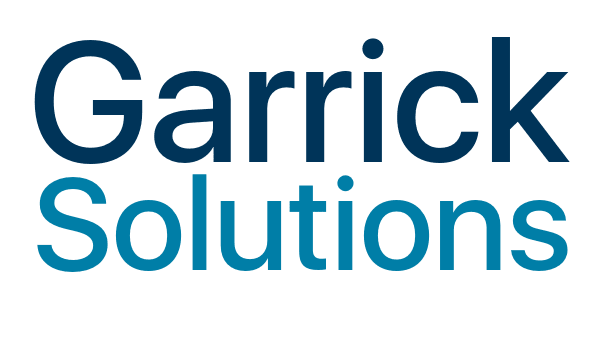You’ve probably heard of RPA, or Robotics Process Automation. But what, exactly, does that mean for your business?
Simply put, RPA is a type of software that automates routine tasks. And in the world of HR, that can mean big things.
In this article, we’ll take a look at three ways RPA can help improve your HR operations. We’ll also explore some of the benefits of automation, and offer a few tips on how to get started. Are you ready to see what RPA can do for your business?
What Is Robotic Process Automation (RPA)?
Robotic process automation (RPA) is a type of software that enables companies to automate repetitive tasks. RPA bots can be configured to work exactly the same way as a human would, and they can be taught to mimic the actions of employees.
This means that companies can use RPA to automate tasks such as onboarding new employees, processing payroll, and managing employee records. RPA can also be used to manage routine tasks such as responding to emails and scheduling appointments. By automating these tasks, companies can free up employees’ time so that they can focus on more important work.
How RPA Can Increase Efficiency and Productivity in HR Operations
When it comes to automating your HR operations, there are ways RPA can help streamline and improve your process. Here are the ways:
- Pre Screening Resumes
- Data management Process of Employees
- Payroll Process
1. Screening Resume
Manually screening CVs can be a daunting task if you are meant to go through thousands of resumes for you to hire candidates for a job role. Every recruitment process needs to be fast and easy in other to help employees focus their efforts on more pressing issues that require their attention and expertise.
Nowadays the integration of Applicant Tracking Systems (ATS) in most HR software has eliminated the need to go manually go through every CVs.
But what exactly is Applicant Tracking System (ATS)?
Applicant Tracking System is automation software that manages the recruiting and hiring process, including job postings and job application processes. This software works as a Robotic Process Automation, RPA that handles all the recruitment processes such as; posting jobs online, and tracking all submitted CVs through different channels such as website and social media handles. You can also create a customized application that can review resumes and highlight those candidates that have a higher level degree, or X years of experience, or keywords which would make them stand out as candidates.
Some tasks carried out by the Applicant Tracking System software include:
- ATS can be linked to various multiple jobs such as LinkedIn and Zip Recruiter saving you the stress of manually posting on each job recruitment website. This reduces the time spent posting on each job board and reduces the cost of registration to multiple job boards.
- ATS helps build brand and transparency in the hiring process. It ensures that candidates are aware of each stage through the sending of automated emails about each recruitment process.
- It can help the recruitment team easily manage their recruitment process with the team either through collaboration among team members or follow-up job candidates.
- ATS eliminates the use of multiple spreadsheets to gather information. All processes can be managed and automated from a single dashboard from start to finish.
2. Data management process of employees
Managing the data of employees can be a difficult process as the organization becomes bigger in the workforce. RPA has a vital role to play in the data management of enterprises. When an employee newly joins an organization, every data stream must be coordinated to create a new user account and email address, allocate access rights, etc. Automation via RPA can be helpful here.
Robotic Process Automation in HR departments helps remove the time wasted in managing data through the manual onboarding of new employees from spreadsheets. In this process, RPA can help with creating a user account from the already existing profile of candidates from the recruitment process. As a result of this the data of employees can be easily managed in the organization across multiple platforms and systems.
3. Payroll Process
Payroll process is one of the most tedious processes in HR department. It is a time-consuming process and requires an error-free approach to handle the payroll process. This payroll process requires different deductions and additions due to factors like tax, number of worked hours of employees, and other sanctions as the case might be for a different organization.
So to avoid errors in handling the payroll process, RPA can offer a tailored payroll process automation for salary calculation rather than relying on manual processing. Automating your payroll process aids in calculating tax withholdings and filing taxes to create payroll reports. In this way the HR team which manages payroll can focus on auditing and validating.
What Are the Challenges of Implementing RPA?
Although RPA can transform your HR operations for the better, you need to be aware of the potential challenges you may face when implementing. The most important thing to remember is that RPA isn’t a one-size-fits-all solution and requires thoughtful consideration before implementation. You will need to decide on the scope of automation and how much of it you plan to implement. This means taking into account changes in organizational needs and objectives, as well as employee needs and preferences.
A couple of key things to keep in mind is to, first focus on the few processes that will give the most value back to your organization, so you don’t bite more than you can chew. Remember senior leadership will be expecting a return on the investment ROI of the automation. Start small, get your feet wet, and grow gradually. Also make sure you have support from your IT team or senior leadership. It’s good to have a senior champion that can help push the project forward.
You must also consider the software and hardware requirements for implementation. Automation requires a heavy investment both in terms of resources as well as money and you should weigh these costs against the potential savings your organization can realize by going for automation in HR processes first. Additionally, you will have to factor in training costs associated with new HR processes or systems that may be mandated by RPA implementation. Finally, you must evaluate whether your organization is prepared for any unforeseen risks associated with RPA implementation such as data security risks or technical glitches.
Another thing to consider is to first have a conversation with the IT team, scope out the project, and have a clear definition of what you want to accomplish. There can potentially be an agreement with an RPA provider for another area of the business, and you can leverage to build that relationship, and hopefully implement something in a faster manner.
The Solution
We know how broad of a scope RPA can be, and at Garrick Solutions, we can help you organize your thoughts, discuss what’s doable, and then help you address any challenges in implementing RPA for your business. We will help you materliaze your dream organization workflow by finding a solution that fits your company’s size, industry, and financial budget.
We aim to support you long-term, with a cost-effective, and with a mindset of sustainable growth.
We provide a variety of solutions in Robotic Process Automation (RPA), Resource Management, Cybersecurity Assessments, Business Process Improvements, and consultancy services to assist businesses in their growth.
Contact us today for a chat about how to use technology strategically to grow your business.
Conclusion
In a nutshell, automation through robotic process automation (RPA) can help to speed up and optimize HR operations. It can take care of monotonous and time-consuming tasks, so that HR professionals can focus on more strategic, added value initiatives.
There are many different ways that RPA can be integrated into HR operations to streamline and improve the process. Depending on your specific needs, RPA can be used to improve recruitment, onboarding, and employee management processes.
The benefits of RPA for HR are clear. By automating routine tasks, you can improve efficiency and accuracy, and free up time for more important work.

Robotic Process Automation
Blog Categories
Feel free to get in touch with our expert.
Other related articles
Emerging Chatbot Trends: AI Technology, NLP, Sentiment Analysis & Multi-Language Support for Customer Support
Enhancing healthcare through intelligent conversation. Enhancing Mental Health Support and...
Read MoreHow to Get Started with AI and RPA
Introduction to AI and RPA: A Beginner’s Guide Artificial Intelligence...
Read MoreAI and RPA for Customer Service
The Impact of AI and RPA on Customer Service: Enhancing...
Read More




